Torre de luz
Description
The mobile light towers feature excellent wind resistance and a wide area of illumination. They can be utilized in variety of situations,such as construction sites, disaster recovery, industry, mining and event lighting.
The mobile light towers are available with 1000w,4000w,8000w lights, designed for a compact and efficient installation. Both the telescoping mast and illumination angle of the lights can be easily adjusted giving the operator great flexibility in lighting the area.
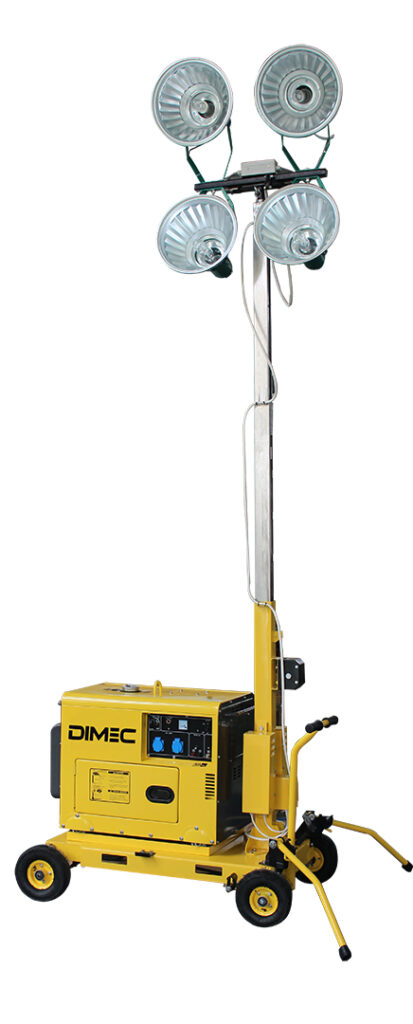
Easy for transport
The light tower is with wheels or drawbar. LTG2500, LTG5500, LTD6700 with four 10inch pneumatic tyres, easy to move. LTD12000 with two big tyres and drawbar, it can be hanged in your car or truck.
Many kinds of lamps
PME supply LED lamp, metal halide lamp, floodlight, spotlight and balloon light as optional.
Safe operation
The brake and stand bar to keep the light tower steady on all surface. After starting the generator, the pneumatic pump can lift the pneumatic-spring lifting mast automatically, and keep its steady. For the mechanical lifting mast, there is brake system to keep the mast steady.
Wide lighting area
The remote control and platform structure can change the lamps to all direction easily. Do not need to adjust the lamps by handle.
Each lamp can be individually adjusted without tools. The tower is designed to be user friendly in term of both operation and handling.
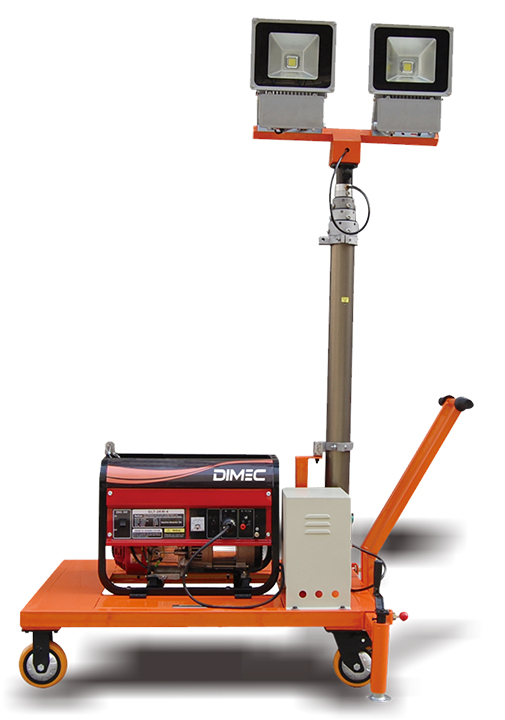
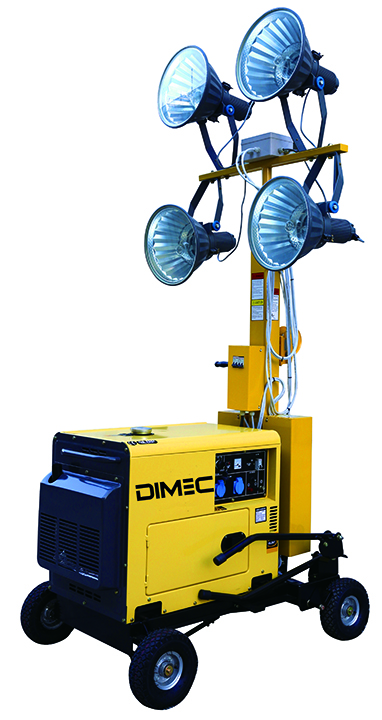
Back-up power
Generator powering the light tower can be used a backup power in emergency situations. There are two receptacles on the light tower mast. You can switch off the light and then connect another electrical load to get a quality output from the generator.
Technical Parameters
| Model | LTG2500 | LTG5500 | LTD6700 | LTD12000 |
|---|---|---|---|---|
| Frecuencia nominal [Hz] | 50/60 | 50/60 | 50/60 | 50/60 |
| Potencia nominal [kw] | 2.0kw (50Hz); 2.2kw (60Hz) | 5.0kw (50Hz); 5.5kw (60Hz) | 4.6kw (50Hz); 5.0kw (60Hz) | 8.5kw (50Hz); 10.5kw (60Hz) |
| Potencia máx. [kw] | 2.2kw (50Hz); 2.4kw (60Hz) | 5.5kw (50Hz); 6.0kw (60Hz) | 5.0kw (50Hz); 5.5kw (60Hz) | 9.5kw (50Hz); 11.5kw (60Hz) |
| Rated voltage [v] | 220; 230; 240 (depend on requirement) | 220; 230; 240 (depend on requirement) | 220; 230; 240 (depend on requirement) | 220; 230; 240 (depend on requirement) |
| Factor de potencia | 1 | 1 | 1 | 1 |
| Fase | Single phase | Single phase | Single phase | Single phase |
| Fuel | Petrol | Petrol | Diesel | Diesel |
| Fuel tanks capacity [L] | 15 | 25 | 14.5 | 70 |
| Tiempo de funcionamiento continuo [h] | 12.5 | 9 | 6.5 | 17.5 |
| Generator N.W.[kg] | 39 | 84 | 153 | 650 |
| Total power of the lamp [w] | 500x2 | 1000x4 | 1000x4 | 2000X4 |
| Luminous flux [lm] | 144000 | 440000 | 440000 | 880000 |
| Mast | 3 stages lifting mast | 3 stages lifting mast | 3 stages lifting mast | 3 stages lifting mast |
| Lifting limit of the mast [m] | 3.5 | 4.2 | 4.2 | 5 |
| Inclination | ≤10 degrees | ≤10 degrees | ≤10 degrees | ≤10 degrees |
| Windproof ability | ≤8 grade | ≤8 grade | ≤8 grade | ≤8 grade |
| Light Tower N.W. [kg] | 140 | 310 | 380 | 850 |
Aplicación
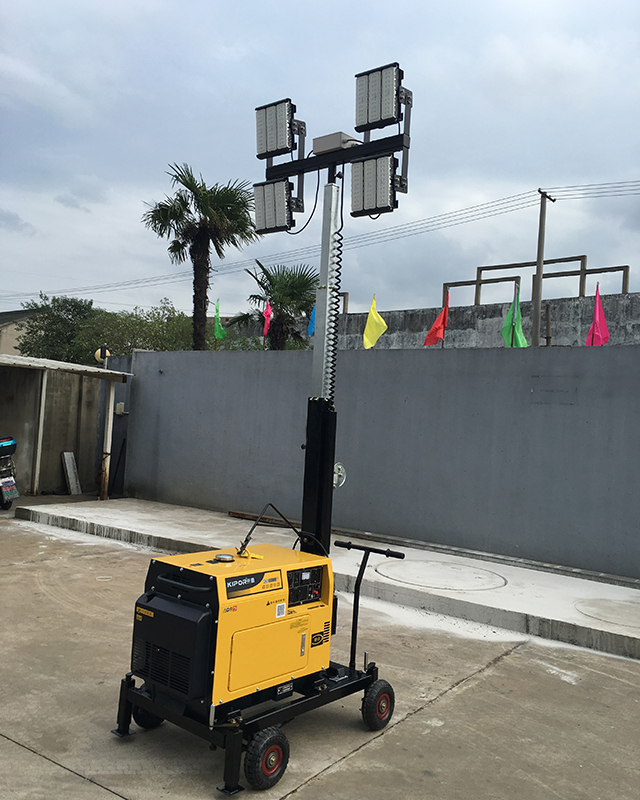
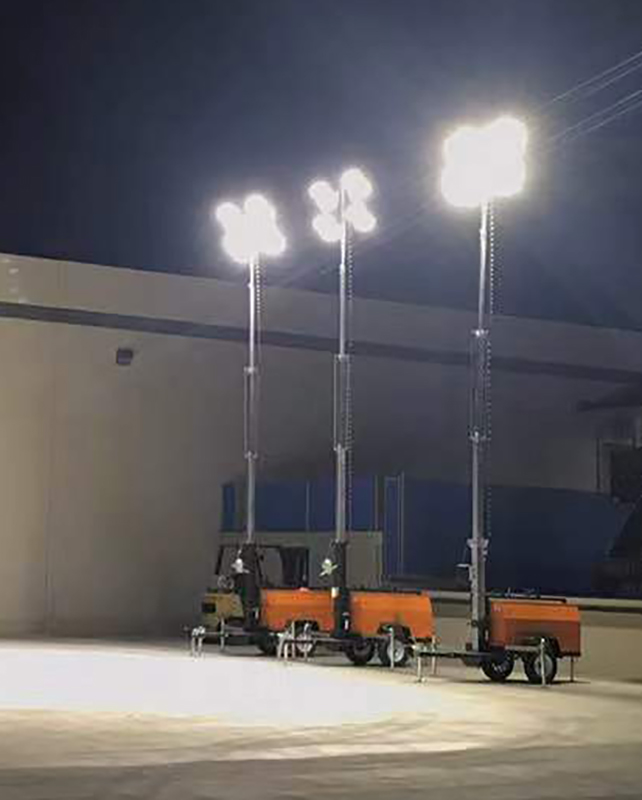
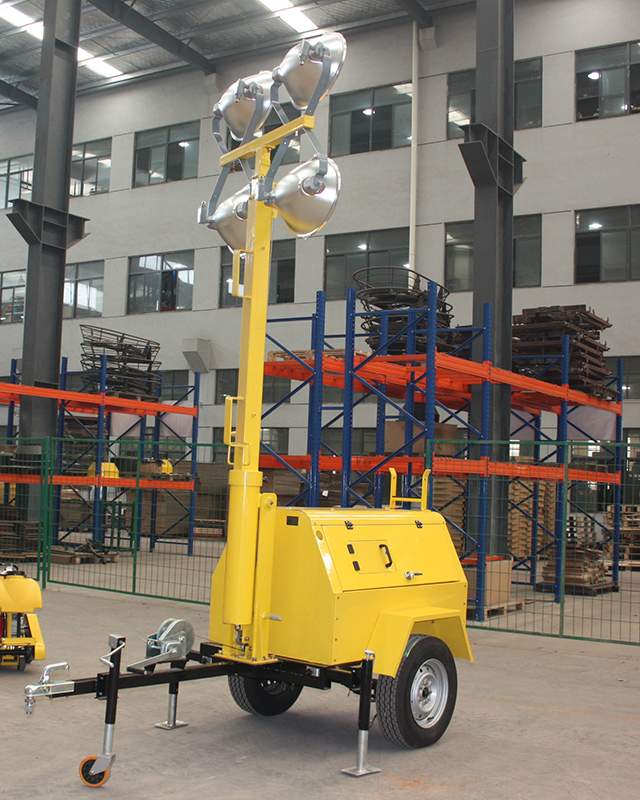
Mantenimiento
Engine periodic maintenance schedule
| Cada uso | 1er mes o 20 Hrs. | Cada 3 meses o 100 Hrs. | Cada 6 meses o 500 Hrs. | Cada año o 1000 Hrs. | |
|---|---|---|---|---|---|
| Comprobación y llenado de combustible | √ | ||||
| Descarga de combustible | √ | ||||
| Comprobación y llenado de aceite | √ | ||||
| Comprobar la fuga de aceite | √ | ||||
| Comprobar y apretar la tornillería exterior | √ | ||||
| Cambiar el aceite | √ | √ | |||
| Cambiar el filtro de aceite | √ | ||||
| Cambiar el elemento del filtro de aire | √(1) | ||||
| Filtro de combustible limpio | √(2)(cambio) | ||||
| Comprobar la bomba de aceite de alta presión | √(2) | ||||
| Comprobar boquilla | √(2) | ||||
| Comprobar el tubo de combustible | √(2) | ||||
| Ajustar las aberturas de entrada y salida de aire | √(2) | √(2) | |||
| Compuerta de entrada y salida de aire de rectificado | √(2) | ||||
| Cambio de segmentos | √(2) | ||||
| Comprobar la solución electrolítica del acumulador | Cada mes | ||||
| Comprobar el cepillo eléctrico y el anillo deslizante | √(2) | ||||
| Comprobar la resistencia del aislamiento | Dejar de trabajar es más de 10 días | ||||
Se realiza cada mes indicado o cada intervalo de horas de funcionamiento, lo que ocurra primero.
(1)Mantenimiento más frecuente cuando se utiliza en zonas polvorientas.
(2)Estos elementos deben ser reparados por su distribuidor a menos que usted disponga de las herramientas adecuadas y tenga conocimientos mecánicos. Consulte los procedimientos de mantenimiento en el manual.